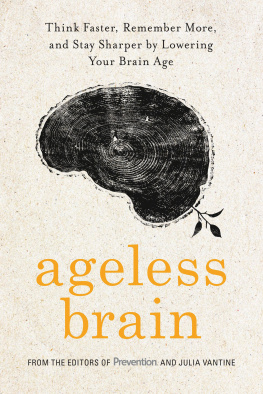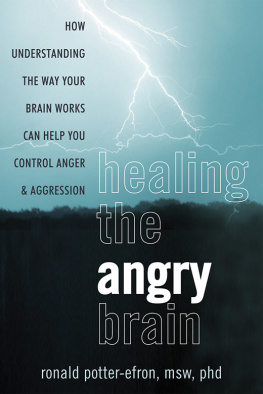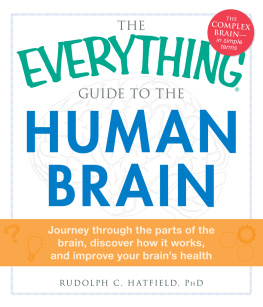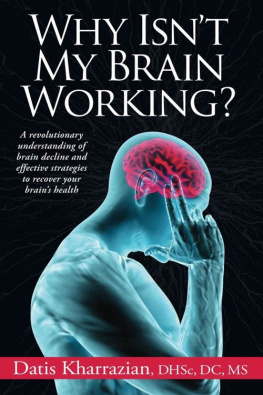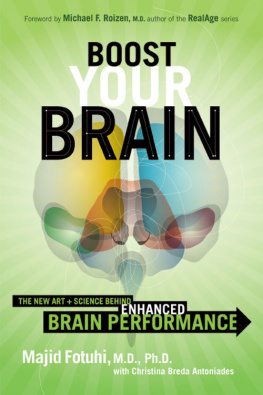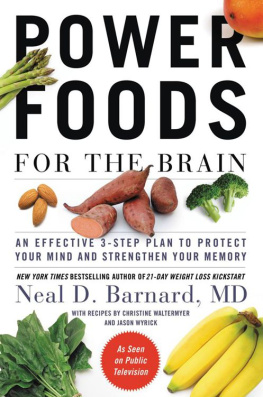

Copyright 2003 by J. Robert Hatherill.
All rights reserved. No part of this publication may be reproduced or transmitted in any form or by any means electronic or mechanical, including photocopy, recording, or any information storage and retrieval system now known or to be invented, without permission in writing from the publisher, except by a reviewer who wishes to quote brief passages in connection with a review written for inclusion in a magazine, newspaper, or broadcast.
Image credits: pp. 6, 10, 144, 170, Steve Brown; p. 62, Custom Medical Stock Photo; p. 108, Custom Medical Stock Photo; p. 160, Custom Medical Stock Photo.
Library of Congress Cataloging-in-Publication Data
ISBN 978-1-59698-237-6
Published in the United States by
LifeLine Press
A Regnery Publishing Company
One Massachusetts Avenue, N.W.
Washington, DC 20001
Visit us at www.lifelinepress.com.
Distributed to the trade by
National Book Network
4720-A Boston Way
Lanham, MD 20706
10 9 8 7 6 5 4 3 2 1
Books are available in quantity for promotional or premium use. Write to Director of Special Sales, Regnery Publishing, Inc., One Massachusetts Avenue, N.W., Washington, DC 20001, for information on discounts and terms or call (202) 216-0600.
The information contained in this book is not a substitute for medical counseling and care. All matters pertaining to your physical health should be supervised by a health care professional.
To Grant Adamson
Contents
Acknowledgments
Many people were vital contributors to The BrainGate. I am grateful for the brilliant and scholarly guidance of Dr. Mark Schlenz. I am indebted to artist extraordinaire, Steve Brown. I owe a debt of gratitude to web wizard and scholar Jeff Nelson of vegsource.com. A special thanks goes to Molly Mullen and Mike Ward at LifeLine Press and to Roz Siegal for their inspiration and hours of laboring over the creation of this book. Thanks also to Lauren Lawson and Karen Beck at LifeLine. Finally, I would like to thank the Environmental Studies Program, especially Veronika Banas-Ostendorf, Jo Little, Mary Anderson, J. Marc McGinnes, and Cheryl Hutton for their support of this book.

THROUGHOUT HISTORY, people have been driven by curiosity to explore every aspect of their physical surroundings. Many great frontiers still exist. In space, the farthest galaxies remain a mystery. On earth, the deepest reaches of the ocean await to be studied.
For the human body, the last frontier is the brain. For centuries, this mysterious organ has bewildered many by deftly concealing its multitude of secrets. However, with time, new discoveries and technologies are enhancing our understanding of this complex organ.
The average human brain weighs a mere three pounds and is only the size of a grapefruit. Mostly composed of fat, the brain has no intrinsic moving parts like a beating heart made mostly of protein. Yet it regulates our most basic behaviorseating, keeping warm, sleepingand our most sophisticated tasks of music, art, science, and the development of civilization. It cradles our very emotions, hopes, fears, and personality. Despite its immense influence, however, the brain is quite vulnerable, and both inadequate nutrition and pollutants can dramatically affect delicate brain and nervous system functions.
Because of a lengthy and continuing development after birth, human children have the longest period of helplessness in the animal kingdom. Therefore, a babys brain is a work in progress. In the first years of life, the brain undergoes profound changes. Shortly after birth, a babys brain produces many more connections between brain cells than it can possibly utilize. Then the developing organ prunes and eliminates connections seldom used. At around ten years of age, the brain eliminates excess connections and, for better or worse, a set brain pattern emerges. Depriving a child of a stimulating atmosphere can retard brain growth, because the organ itself can wither and suffer permanently. Richly stimulating environments really do produce rich, thriving brains in children and can lessen the risk of brain diseases in adults.
Ironic as it may seem, cell death plays a tremendous role in the pruning process that is vital to brain growth and maintenance. A marvel called programmed cell death, or apoptosis (Greek for a flower losing its petals), is vital to a healthy brain. All higher forms of life use apoptosis in normal growth and maintenance. Cells dying because of trauma, invading germs, toxic agents, or lack of oxygen display large invasions of white blood cells from inflammation. When a cell undergoes programmed death in an orderly process, the cell shrivels up and dies quietly, no inflammation occurs, and scavenger cells engulf the debris and recycle it to other living cells.
As it turns out, many drugs and environmental pollutants cause a glitch in cell life by interrupting the tricky process of programmed cell death. Too much or too little apoptosis causes a disturbing pattern of diseases within the central nervous system. The absence of apoptosis increases the risk of cancer and other disorders, since a cell that normally would die lives instead. For example, researchers have linked tumor growth with the loss of a normal, programmed deletion of select cells. Substances that suppress apoptosis will stall the normal neural circuit pruning, and perhaps lead to hyperactive children with excess circuitry. On the other hand, too much apoptosis can destroy vital brain cells that have limited means to form new tissue. Nature uses apoptosis to balance the unbridled growth of cells with the removal of seriously damaged cells.
Development and Stimulation
Clearly, a vital time frame for brain development spans from before birth to about ten years of age. Acquisition of such refinements as motor skills, emotional control, vision, social attachment, language, and logic occurs during certain windows of opportunity. During these developmental windows, a child must be stimulated by proper visual and auditory experiences or risk permanent mental handicap. For instance, researchers have determined that children under the age of ten have an easier time learning a second language than do older individuals. Because the brain circuits have already been hardwired by the time a child reaches ten years, developed brains find it more difficult to learn new languages. But not all windows of opportunity shut at the same time. The developmental window for organizing words in a sentencesyntaxmay close as early as five or six years of age, whereas the window for adding new words to a vocabulary may never close.
The hungry brain requires not only proper stimulation, but also things it cannot make on its own, such as oxygen and glucose. Therefore, knowing the brains essential nutrition is vital to developing the proper diet for optimal adult brain function.
Theres much more to eating well than just the pleasure and good company or the flavor of a favorite dish. The type of dietary fat consumed may be crucial to preventing brain disorders. Evidence suggests that the different types of dietary fat may affect a persons mood and ability to learn. Many people are becoming true believers in the old adage You are what you eat. In terms of brain function what you eat determines both your psyche and intellectual state.
Next page



